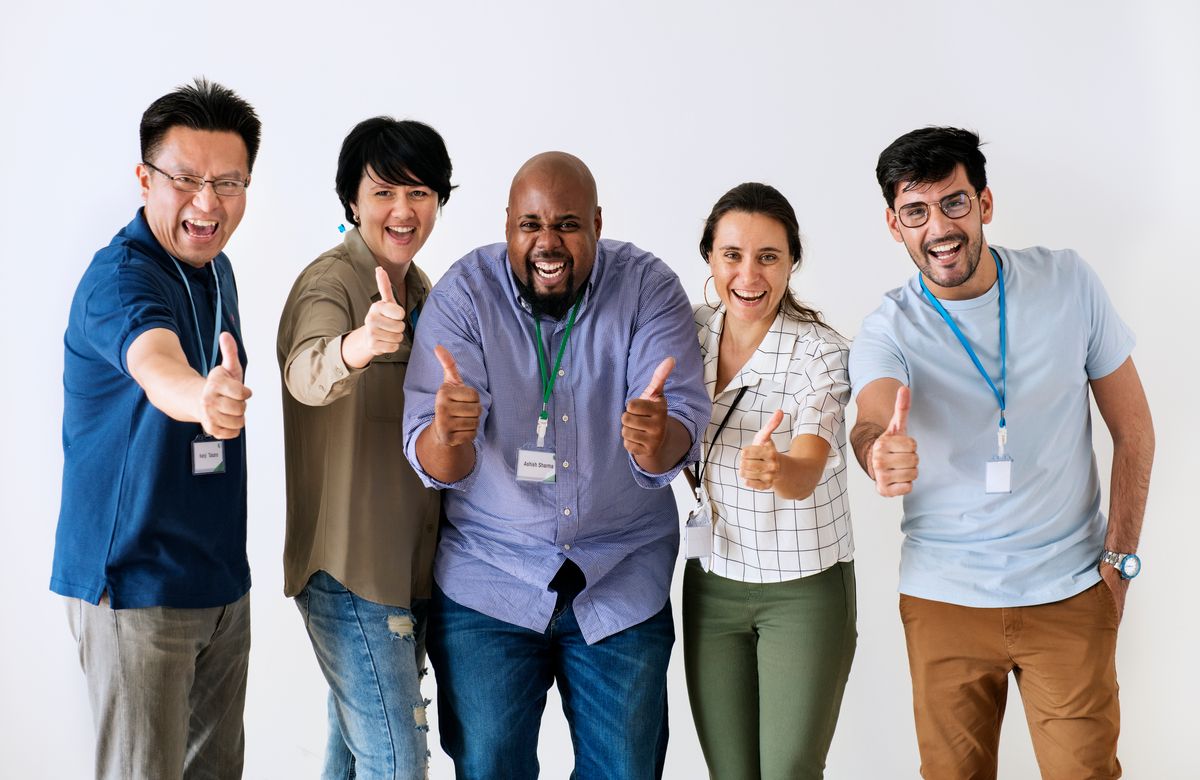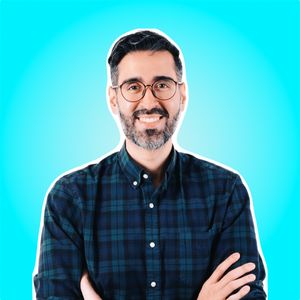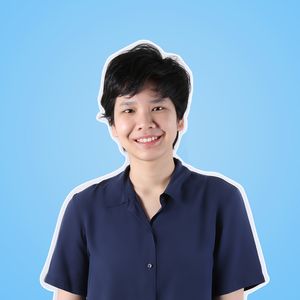Studies show that employees need feedback — and that there is a strong relationship between feedback giving and employee happiness & ambassadorship.
The Importance of Feedback
Feedback is a reaction to a process or activity (or the information obtained from such a response). It can be a simple comment on a task or a detailed and structured discussion about how things are going and what we could do better [1].
Feedback is essential, and it is a critical part of leaders’ skillset [2]. Feedback is a tool to: [3] [4]
- Motivate employees to perform better.
- Create a continuous flow of communication.
- Keep people on the right track.
- Communicate clear goals and be aligned across the organization.
- Improve performance; critical feedback is constructive criticism and is the best kind of feedback that can help formulate better decisions to increase performance.
- Be a tool for continuous learning; feedback creates strategies, develop products and services improvements, and improve relationships.
“We all need people who will give us feedback. That’s how we improve.” — Bill Gates
And feedback is useful for everyone, not just leaders. (Here are Tips for providing more effective feedback by Happily). Organizations must consider creating a strong feedback culture. Feedback is all around us, and we can use it to improve ourselves and our work. It helps generate new ideas, formulate business decisions, and drives the success of organizations.
Designing for the Great Feedback
“Once people take ownership over the decision to receive feedback, they’re less defensive about it.” — Adam Grant, Organizational psychologist and bestselling author
Feedback is best received when asked. We’re more willing to listen, take the feedback seriously, and use it to improve ourselves. It is a critical component of activating the growth mindset.
Asking for feedback was a critical design decision when creating the Peer Feedback experience in Happily.ai. The problem with feedback in today’s organizations is that it is done with performance reviews, making it biased and not centered around improvement and development. We wanted constructive feedback to come from anywhere in a more timely, structured, and effective way.
With this goal in mind, we designed the Peer Feedback experience with the following key components:
- Asking: Peer Feedback is strictly voluntary and starts with asking for feedback from up to 2 colleagues from anywhere in their organization (e.g., the CEO, team members, non-team members).
- Timely: The opportunity to ask for feedback is initiated at the beginning of every month.
- Structured: Given feedback is structured into “What is something [person] did that was great?” and “What is something [person] could improve on?”
- Easy to Understand: Given feedback is provided as bullet points, and space is visually limited to force conciseness.
- Positive Reinforcement: Select core traits that the person excels at to reinforce strengths.
- Clear: A rating is provided to help understand how well expectations are being met (Needs Improvement, Meets Expectations, Exceeding Expectations, Truly Outstanding).
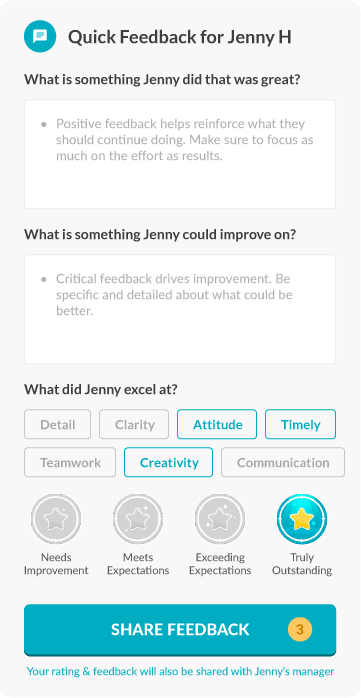
Study & Results
Our Study
We collected peer feedback data from 1629 employees (across 15 companies) over a 3-month period. A total of 1039 employees voluntarily participated, where 826 employees requested feedback from others, and 853 employees were asked to provide peer feedback.
Each person may request feedback from up to 2 peers per month. Over three months, a maximum of 6 feedback interactions could be initiated by each person. The most common feedback frequency is one interaction, and participants request feedback on average three times over this period.
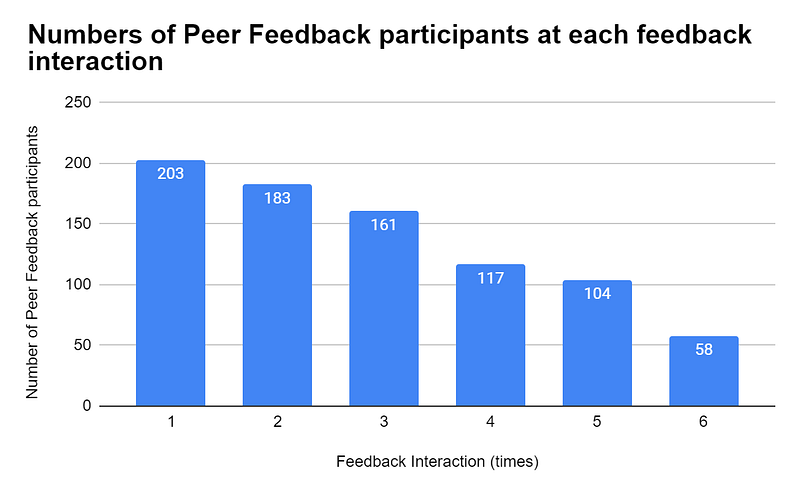
Participation rates varied from 31% to 85% across the 15 companies, with 51% of all employees voluntarily requesting feedback from their peers. The majority of employees are actively looking for feedback from others to improve themselves.

Case Study
To study the positive outcomes of a feedback culture, we looked at two companies with different feedback behavior. Outcomes measured include employee happiness and how likely employees recommend their workplace to others (an eNPS score which indicates employee satisfaction and ambassadorship).
Company A and Company B are of similar size, having 192 and 198 employees, respectively. Company B has a more robust feedback culture, with 68% of employees participating in peer feedback, while Company A has a 43% participation rate:
- In Company A, 50% of employees are measured as Happy as compared to 73% in Company B.
- The eNPS score of Company A is +14 and Company B is +27. The eNPS score of Company B is almost 2x of the score of Company A.
- Breaking down the eNPS score, Company B has more promoters (37% vs. 30%) and less detractors (10% vs. 16%) than Company A.

There is a clear relationship between feedback culture and positive outcomes that suggest that employees who are more willing to ask for feedback from others can create a happier work environment.
Enabling employees to be open to feedback
Research shows that a growth mindset, the belief that skills can be improved with time and effort, can equip us to receive meaningful and supportive feedback [5]. A critical part of receiving feedback is to have constructive feedback appropriately given. A few ways to boost feedback giving [6]:
- Praise the person’s effort, persistence, or other strategies that led to success, rather than emphasizing their talent or innate qualities.
- Urge improvement and learning moments, rather than a stringent focus on results and outcomes.
- Use a growth-oriented language, such as rephrasing “negative” to “developmental” feedback or asking employees how they plan to move beyond challenges.
As leaders, you can help cultivate a feedback culture and a growth mindset by doing the following [6]:
- Encourage team members to ask for feedback. Rather than proactively provide feedback to team members, teach employees to own their learning by reaching out to you for feedback.
- Recognize effort and progress. While rewarding positive performance outcomes is essential, always acknowledge the action that led to success and the progress made on the way.
- Create your growth-minded language. Tailor your language to communicate continuous development to your team.
Conclusion
The human brain reacts differently to feedback when the growth mindset is activated [6]. There is an openness to receiving feedback and an increase in the intrinsic motivation to learn and perform. Workplace interactions become more successful, employees are happier, and organizations can attract and retain better talent. The return of investment in building a feedback culture and a growth mindset is crystal clear.
At Happily.ai, we help organizations build a feedback culture and a growth mindset with Peer Feedback and many other employee experiences. Visit our website to learn more, request a demo, and be on your way to activating positive outcomes and a happier workplace.

References:
[1] https://www.cmtedd.act.gov.au/__data/assets/pdf_file/0003/463728/art_feedback.pdf
[2] https://www.actitime.com/project-management/importance-of-feedback/
[3] https://www.snapsurveys.com/blog/5-reasons-feedback-important/
[4]https://emxcelsolutions.com/resources/blog/why-feedback-is-important-in-an-organization/
[5] https://neuroleadership.com/your-brain-at-work/feedback-strategies-growth-mindset/
[6] “Transforming Performance Management with a Growth Mindset Approach,” white paper from the NeuroLeadership Institute
[7] https://www.freepik.com/photos/business-card'-Business card photo created by rawpixel.com - www.freepik.com


